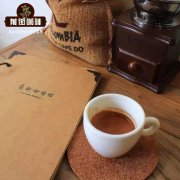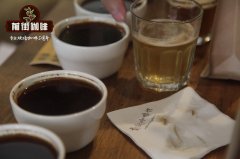How about El Salvador Pacamara coffee? Do the coffee beans in El Salvador taste good?

El Salvador is the smallest country in Central America. Although the output of coffee beans is much less than that of other countries, El Salvador has the advantage of planting coffee trees under the dual conditions of natural Pacific airflow and multi-volcanic environment. El Salvador has the advantage of planting coffee trees and can make the coffee beans show diversified flavor characteristics. Santa Ana Volcano volcano in the west of El Salvador is its famous producing area. The western part of Mount Santa Ana, up to 2381 meters above sea level, is still an active volcano. It erupted in 2005. Although it caused agricultural damage to coffee farmers, the volcanic ash at that time became a rich source of nutrients, making Mount Santa Ana one of the best coffee-producing areas in El Salvador.
Pakamara
Pacamara, created by the Salvadoran Coffee Institute in 1958, is a hybrid of Pacas and Maragogipe. It is considered to be an unstable variety, which means that the plant is inconsistent from generation to generation. In spite of this, Pakamara is widely cultivated.
Pacas is another variant of bourbon and Maragogipe is a variant of iron pickup. Maragogipe has very large coffee cherries and passes the gene to Pacamara. The size and unique pointed leaves of coffee cherries make Pakamara easy to identify.
Pacamara's plant is conical, with compact growth between the branches, making it a dense plant. The characteristics of the branches are similar to those of bourbon, thicker and less flexible than most varieties.
Important Notice :
前街咖啡 FrontStreet Coffee has moved to new addredd:
FrontStreet Coffee Address: 315,Donghua East Road,GuangZhou
Tel:020 38364473
- Prev

Peruvian CENFROCAFE Coffee how about Peruvian coffee? How's the Peruvian coffee?
Peru is located in the west of South America, bordering with Brazil, Colombia and Bolivia, and the Pacific Ocean to the west. The coastline is 2254 kilometers long. The Andes range from north to south, and the mountains account for 1% of the total area of the country. Peruvian coffee is mostly grown along the eastern side of the Andes, mostly at an altitude of 1300 to 1850 meters above sea level, and a small number of producing areas are grown at about 2000 meters above sea level.
- Next

Introduction of Himalayan Manor in El Salvador slow Solar drying treatment by anaerobic fermentation
El Salvador is the smallest country in Central America. Although the output of coffee beans is much less than that of other countries, under the dual conditions of natural Pacific airflow and multi-volcanic environment, El Salvador has the advantage of planting coffee trees and can make the coffee beans show diversified flavor characteristics, which is located in the west of the Sant volcano.
Related
- Detailed explanation of Jadeite planting Land in Panamanian Jadeite Manor introduction to the grading system of Jadeite competitive bidding, Red bid, Green bid and Rose Summer
- Story of Coffee planting in Brenka region of Costa Rica Stonehenge Manor anaerobic heavy honey treatment of flavor mouth
- What's on the barrel of Blue Mountain Coffee beans?
- Can American coffee also pull flowers? How to use hot American style to pull out a good-looking pattern?
- Can you make a cold extract with coffee beans? What is the right proportion for cold-extracted coffee formula?
- Indonesian PWN Gold Mandrine Coffee Origin Features Flavor How to Chong? Mandolin coffee is American.
- A brief introduction to the flavor characteristics of Brazilian yellow bourbon coffee beans
- What is the effect of different water quality on the flavor of cold-extracted coffee? What kind of water is best for brewing coffee?
- Why do you think of Rose Summer whenever you mention Panamanian coffee?
- Introduction to the characteristics of authentic blue mountain coffee bean producing areas? What is the CIB Coffee Authority in Jamaica?

